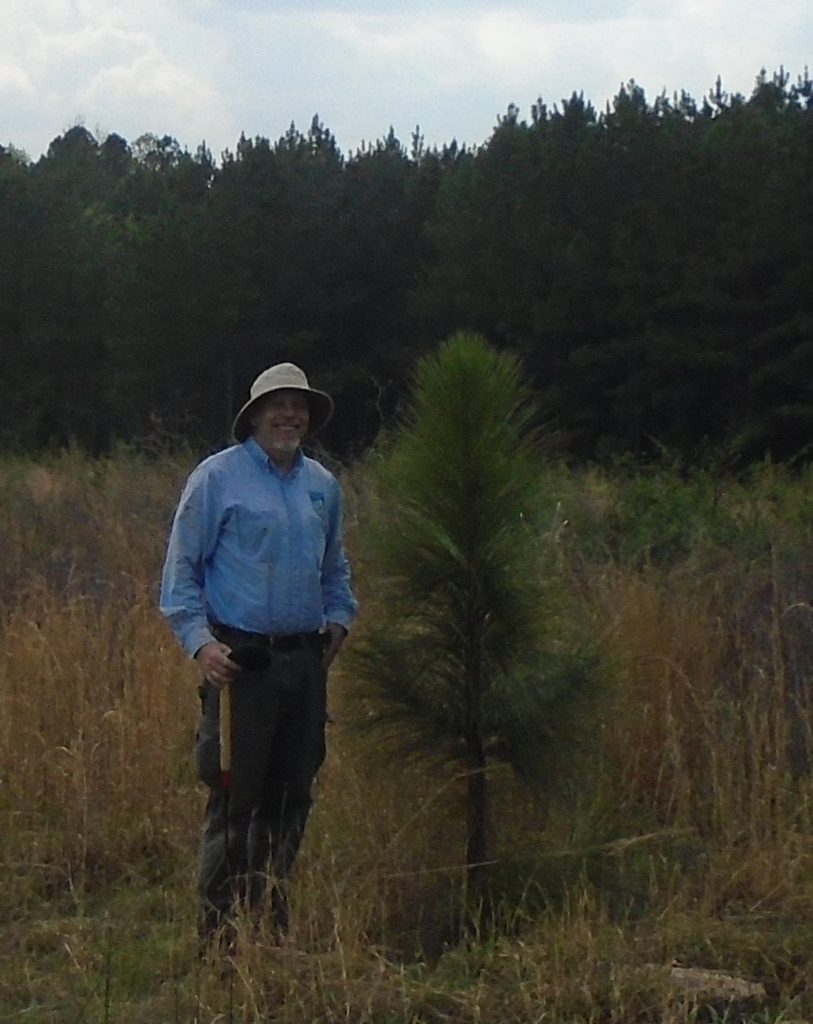Longleaf pine restoration is the topic of articles in other parts of this magazine and I will leave the details longleaf cultivation to experts. Adding longleaf back into the forest mix encourages diversity and I want like to talk more about the general changes and the benefits of diversity in our forestlands.
Encouraging species diversity is a good strategy when faced with uncertainty, complexity and change. Forest landowners face these conditions and the effects are accelerating. Forest planning must look at least several decades into the future. We cannot predict the future in detail, but we can be reasonably sure that conditions thirty years from now will be significantly different from what we have today because the factors that will create the changes are already here.
Leave aside for a moment the big uncertainty of climate change, more about that below. We have enough change drivers without it. For the last century, Virginia land area covered by trees was expanding as forests regrew naturally or were reestablished on former agricultural fields. This trend is finished, as conversion of land for development more than balances forest growth. Urbanization will continue to take up forestlands and, maybe more importantly, divide and fragment them. Twenty ten acre tracts separated by roads and houses are not the same as one unbroken 200 acre one. Beyond that, with the new roads and houses will come new species of trees and plants. Deodar cedar and metasequoia are beautiful in the Virginia landscape, but they are not from around here.
Invasive species are challenging. Some have been around for a long time, such as tree-of-heaven, kudzu or multiflora rose. They are nuisances, but we are used to them. However, new ones are constantly coming and they can be disruptive. The emerald ash borer may eliminate forests of ash. Sometimes big changes come from familiar insects, animals or plants in new association, as seems to be the problem with white pine in the western mountains. Moreover, sometimes it is hard to tell what is going on without looking closely, as with dogwood anthracnose. Researchers tell us that dogwoods dying out in their traditional places in deep forests and becoming a tree of the sunnier forest edge where the fungus spreads slower. We see dogwoods along the roads but may fail to notice their absence deeper in the woods. Dogwoods play an important role for wildlife, shading waterways and recycling nutrients. How do our forests respond when they are gone?
Let’s return to the big factor of climate change. While we cannot precisely predict the effects in any particular place, we can make some general assumptions. Climate change will open opportunities for some species, maybe invasive ones, and make life harder for others. We may see novel ecological communities, with species associated in ways they were not before. This may affect longleaf pine. The natural range of longleaf pine extends into Virginia, but not very far north or west. In most of the state, if you establish longleaf pine you are creating a new association, not “restoring” it. However, in a time of climate change and disequilibrium this may be exactly the right thing to do, as changes may open opportunities to expand the longleaf range. Conditions thirty years from now may be very kind to it.
This is not the first time we have gone through big changes. Walk around your land, look at the witness trees, the boundary trees, and read the descriptions on the old deeds. If your land is like mine, you will notice significant changes in the types of trees represented among the witness trees compared with those growing up now. It speaks to a different sort of forest when those old trees were young. The forest we leave to our grandchildren will be different again. It is our task to make it sustainable for ourselves and for them.










